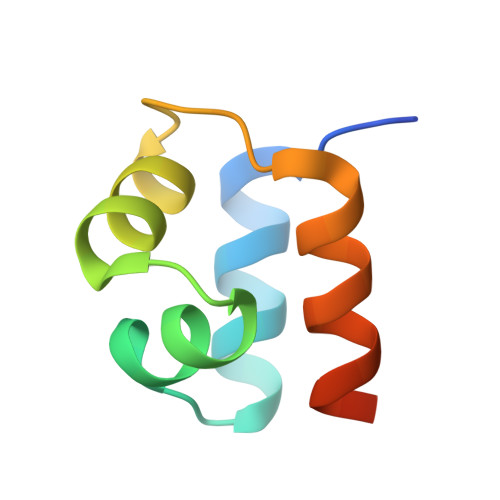Molecular basis of anti-CRISPR operon repression by Aca10.
Lee, S.Y., Birkholz, N., Fineran, P.C., Park, H.H.(2022) Nucleic Acids Res 50: 8919-8928
- PubMed: 35920325
- DOI: https://doi.org/10.1093/nar/gkac656
- Primary Citation of Related Structures:
7XI5 - PubMed Abstract:
CRISPR-Cas systems are bacterial defense systems for fighting against invaders such as bacteriophages and mobile genetic elements. To escape destruction by these bacterial immune systems, phages have co-evolved multiple anti-CRISPR (Acr) proteins, which inhibit CRISPR-Cas function. Many acr genes form an operon with genes encoding transcriptional regulators, called anti-CRISPR-associated (Aca) proteins. Aca10 is the most recently discovered Aca family that is encoded within an operon containing acrIC7 and acrIC6 in Pseudomonas citronellolis. Here, we report the high-resolution crystal structure of an Aca10 protein to unveil the molecular basis of transcriptional repressor role of Aca10 in the acrIC7-acrIC6-aca10 operon. We identified that Aca10 forms a dimer in solution, which is critical for binding specific DNA. We also showed that Aca10 directly recognizes a 21 bp palindromic sequence in the promoter of the acr operon. Finally, we revealed that R44 of Aca10 is a critical residue involved in the DNA binding, which likely results in a high degree of DNA bending.
- College of Pharmacy, Chung-Ang University, Seoul 06974, Republic of Korea.
Organizational Affiliation:
















